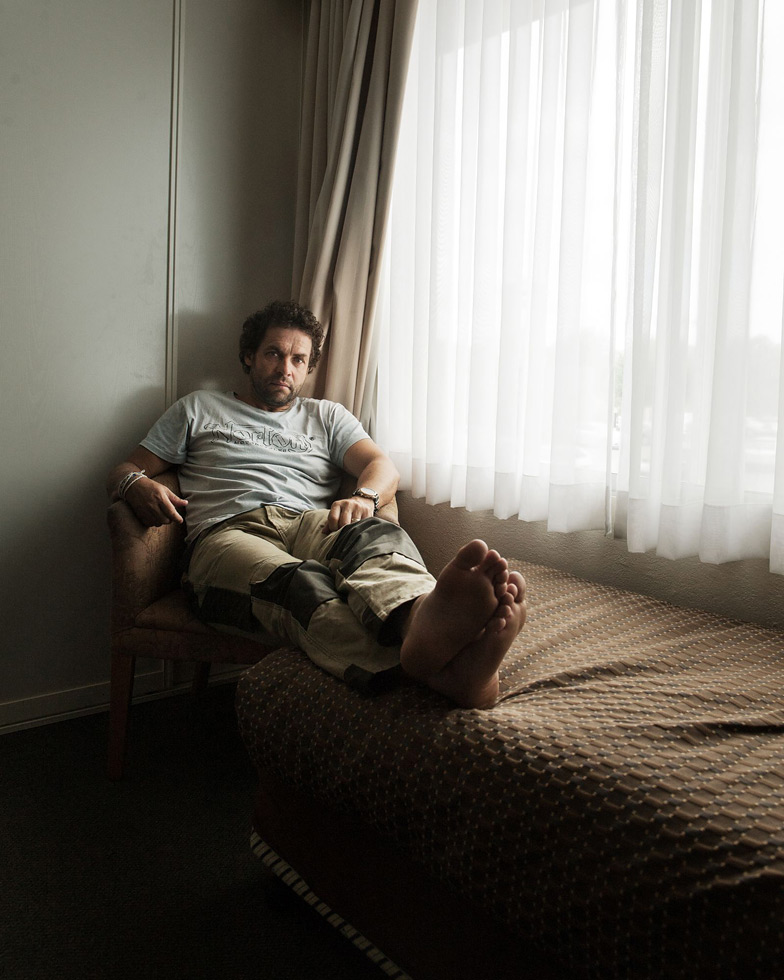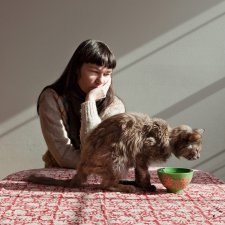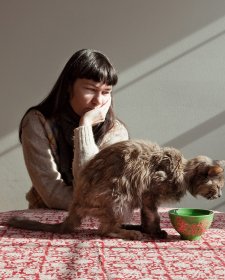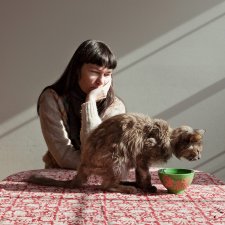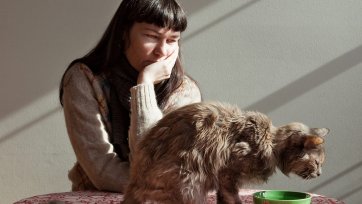How do you define your own practice?
I like to think I'm an artist who uses photography as my medium, but I work commercially as a photographer and it's my full time occupation so I guess that defines me as a photographer or maybe a commercial artist?
Do you have a website or are you represented on a website?
simonharsent.com
How would you describe your relationship to the subject/s?
It can vary from a complete stranger to a close friend. In this case the sitter Ingvar is a friend, colleague and peer.
Was the photograph a result of a constructed, fabricated or candid encounter? Please describe.
It was constructed as I asked Ingvar to sit in the chair at the end of the bed, but it wasn't preconceived, so I feel it was a captured moment. We had both just driven to Canberra for the opening night of the National Photographic Portrait Prize 2012. Both Ingvar and I had been selected as finalists and we decided to road trip to Canberra. I had wanted to stay in a slightly more upmarket accommodation but Ingvar was keen to do something cheaper so I had booked this hotel online. When we got to the place we walked in to one of the rooms where there was a single bed by the window and bunk beds opposite. I instantly loved the feeling of the room and the texture, I instantly knew there was a picture to be had. We sat in the room together and I decided to get the camera out and shoot a portrait of Ingvar to document the moment. He was at first sitting on the bunk beds opposite but I liked the light that was coming through the window so I asked him to move into the chair, he just slouched in the chair and put his feet up. I think it helped that Ingvar is an incredible portrait photographer himself he knew straight away what I was trying to get, which really was nothing more than to document the moment. I joked with him at the time that it would be my entry for this year's prize, and as it turns out it was and is a finalist, funny how these things work out.
What are the ideas or themes underpinning your portrait?
No real idea as such apart from as I mentioned wanting to document the moment. Sometimes for me a portrait is just as simple as that, it is a record of a person, a time and a place, so I guess you could say it is more historical than anything.
Please describe the technical aspects of your photograph?
I used, as I do for all my work, a Canon digital SLR. I think this one was shot with the 1dx lll and I think it was shot with the 35mm prime lens. The lighting for this image was all natural, although I do use artificial light a lot in my other work. I don't have a strict way of working. I just tend to see what is around me and how I can work with it or if I need to light it. The image has been slightly colour graded in Photoshop. I don't like to use Photoshop as a retouching tool for personal work. I use it just to control the colour and density much the same way I would if I was printing in the darkroom.
How was the final print made?
Is this print one of an edition? The final print is an ink jet print printed on Canson paper with a large format printer. The print is an open edition.
Describe your consideration of scale, mounting and framing in the presentation of your portrait?
The framing is incredibly important it must enhance the photograph and not overpower it, when framing I'll look at a lot of different possibilities before deciding on the final frame but it boils down to a gut feeling. Like the creation of the picture, it needs to be intuitive. I tend to like simple frames that don't fight with the picture. It's the same with the size of the print normally it's just what feels right. I might try it at lots of different sizes before I make the final print but I think you also have to take into consideration the context and environment of how and where it will be seen.
Who would you nominate as your influences?
I draw my influences from all over but for portraits I would have to say my main inspiration over the years has been Renaissance painters, especially Rembrandt. I prefer to draw inspiration from painters rather than other photographers, not to say that I don't get inspired by other photographers, I do. I find if I'm embarking on a project I try as hard as possible not to look at how other photographers might have approached a similar topic. I find if you do it can have quite a dramatic effect on what you do or don't do with your own work. I saw an interview with Gilbert and George once and they said they had stopped going to exhibitions because sometimes they would attend a show and the person had produced work of an idea that they were also working on and it would stop them from perusing the idea. I feel the same way. It's tough to continue on a project if you feel someone else has done it already. For me it's almost like you have to keep the blinkers on and ignore what has previously been done. For landscapes most of my inspiration for composition, space and colour comes from Rothko paintings.
Do you have any advice for young photographers (eg. students)?
Do what you love, shoot what you love. If you are really shooting what you love then you can't fail. Try everything you want to. Don't be constrained by boundaries or opinions and remember not to be afraid to make lots and lots of mistakes! I saw a poster on the wall of a high school gym in the basketball locker room. It read 'you miss 100% of the shots you don't take'. Don't give your work away for free; value your art and your ability as an artist. Most of all be in love with photography not in love with the idea of being a photographer.
